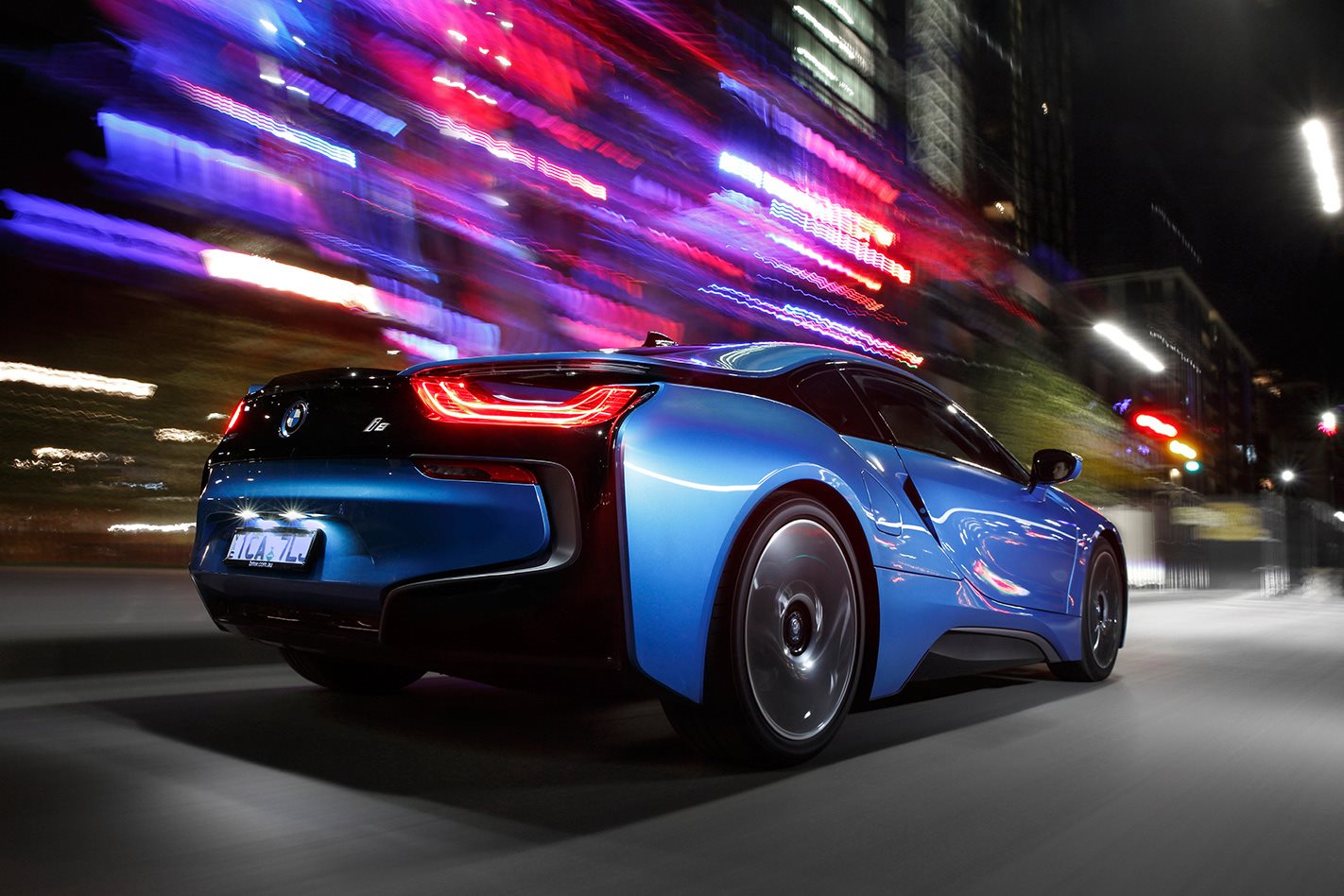Everywhere we go, photographer Cristian Brunelli and I, heads swivel and mouths drop.
Work duties are abandoned, conversations cease and photo requests come thick and fast. If a car’s supercar credentials are judged by the number of stares it attracts, then BMW’s new i8 goes straight to the top of the class.
It’s going to need more than a fancy suit and a nomination to the Green Party, though. While the i8’s ecological credentials provide a key point of difference, there are some serious sports car rivals at its $299,000 price point, including Porsche’s new 911 GTS and Mercedes-AMG’s forthcoming GT, not to mention Audi’s evergreen R8.
BMW has an uphill battle on its hands. Ever since it replaced its ‘ultimate driving machine’ mantra with the somewhat ambiguous ‘efficient dynamics’ the odd crack has appeared in its once impregnable reputation for dynamic excellence. It hasn’t dropped the ball by any means, but there has been the odd fumble. Can it successfully deliver one of the more ambitious production car projects of recent times?
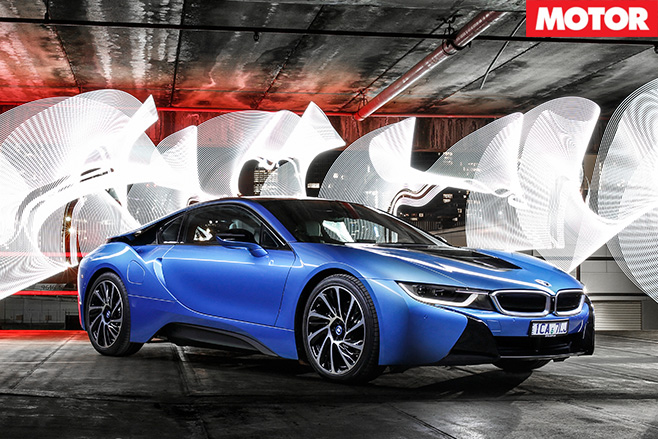
Even non-car enthusiasts somehow instinctively know it’s something out of the ordinary. Gullwing doors help the sense of occasion but, combined with high sills, mean no-one is going to win any awards for elegance when entering or exiting the i8.
Once inside, the forward-set driving position is comfortable with excellent forward vision, though thick A-pillars create large front-three-quarter blind spots. The interior itself continues the concept-car vibe, with a TFT instrument display and a wavy, layered dashboard that looks like it was designed by Salvador Dali.
At night, thin noodles of fluorescent blue make you feel like you’re sitting in one of those light suits from the movie TRON.
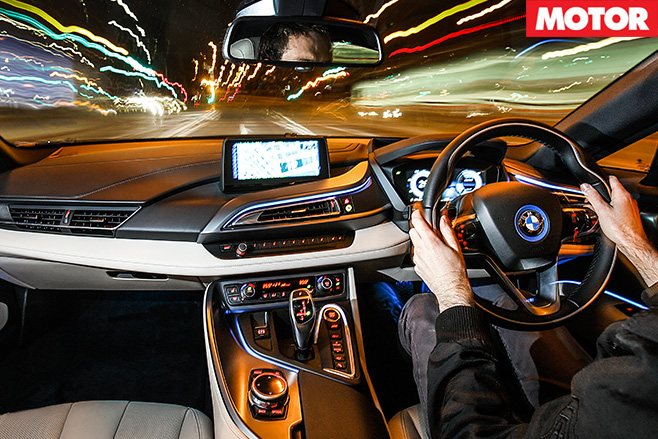
With a fully-charged battery BMW claims an electric-only range of 37km, which is more like 25km in the real world. A full charge takes just under three hours from a conventional outlet or less than two using one of BMW’s ‘i Wallboxes’.
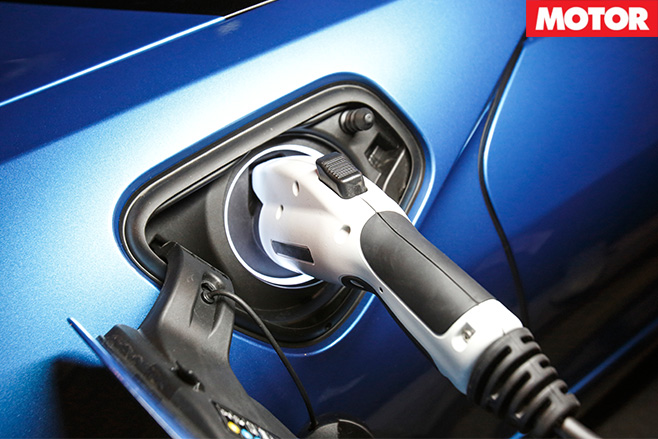
In this mode the i8 emits a cool futuristic whine, though it must be artificial given it’s perfectly capable of operating in complete silence. Should the charge drop too low the 170kW/320Nm 1.5-litre turbocharged three-cylinder automatically fires into life – instantly converting the i8 from front- to all-wheel drive – until the batteries are full enough to resume EV travel.
The transition is seamless, though the way the petrol engine clatters into life like a small diesel (from outside, at least) does ruin the illusion of cool somewhat. The ability to control the energy flow quickly alters your driving habits.

The i8’s greatest low-speed flaws are difficult-to-modulate brakes and a rather abrupt ride; it’s probably no worse than anything else in this segment, but to jiggle along in silence, rather than serenaded by a purring V10, feels slightly unusual.
At highway speeds the ride improves and only persistent tyre roar spoils the calm.

At the dragstrip BMW’s eco warrior continues to punch beyond its 266kW/570Nm, nailing 0-100km/h in 4.46sec (more or less matching BMW’s claim) and a 12.62sec quarter at 183.22km/h. Extracting the numbers isn’t the work of a moment though.
Arriving at Heathcote with the batteries almost empty means each acceleration run is followed by 10-15 minutes of driving up and down the strip in order to build up charge. Still, with the e-boost primed, activating the rudimentary launch control (it really just allows you to stall the car against the brakes momentarily) fires the i8 off the line, the front tyres chirping on the shift to second gear.
The process would have been made easier had I done some research beforehand.

Some may find the i8’s numbers disappointing for a $300K supercar; after all, it’ll struggle to keep up with the new M3, let alone the otherworldly M5/M6. On a winding country road, however, the i8 feels more than fast enough. No, it doesn’t blow you away like an RS6 or 911 Turbo, but its speed feels useable rather than intimidating.
In theory, the electric motors should offer immediate response, but there’s quite a hesitation when getting back on the power. Ironically, you drive around it like old-school turbo lag by hitting the throttle early and once on song the i8 slingshots out of corners.
The six-speed auto ’box is sensational, with lightning fast upshifts and crisply obedient downshifts, but BMW rear-drive traditionalists will no doubt be dismayed to hear traction is absolute thanks to the hybrid all-wheel drive system.
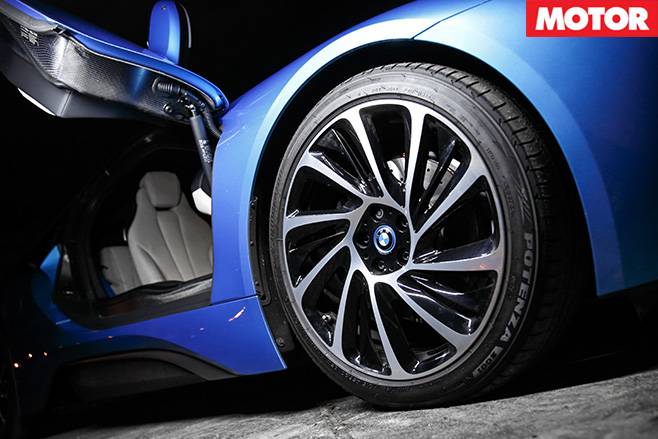
Driven conventionally it’s possible the i8’s front-end push will frustrate, but it’s another example of the driver needing to adapt. A colleague described the i8 as like an old-school 911, needing a traditional slow-in, fast-out approach to minimise understeer and maximise traction on exit.
In faster corners the i8 is a rocket, its tremendously low centre of gravity and near 50:50 weight distribution inspiring huge confidence, helped by steering that is a highlight in terms of its weight and response – in Sport mode at least. One of the strangest things about driving the i8 is its refreshing simplicity.
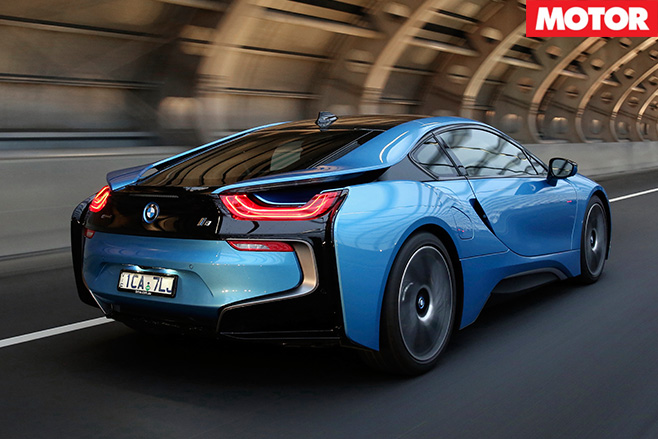
In others, though, it’s definitely next generation. The Leipzig plant in which it’s built is powered by 100 per cent renewable energy, its clever thermoplastic panels will never corrode and can repel parking dings, and as you’d hope, it sets new standards for fuel consumption. Claimed economy is a ridiculous 2.1L/100km, a number reached more through faults in the regulated test cycle than any optimism on BMW’s part.
Our own test result of 9.3L/100km is not quite accurate either due to performance testing and the fact we didn’t plug it in each night. The real difference is that the i8 is at its most frugal when other cars are at their thirstiest, in bumper-to-bumper traffic.
If there’s a fault with the i8 from an enthusiast’s perspective, it’s with the petrol engine. While the artificial sound of the 1.5-litre turbo triple is interesting in a V-twin motorcycle kind of way, just imagine if there was a tiny 2.0-litre V8 buried midships, screaming away at 9000rpm when the mood took you.

There’s little doubt the technology contained within the i8 will trickle down to more mainstream models, while these hybrid heroes will only get faster as battery technology improves. The i8 can’t thrill like a 911, but it’s a brilliantly resolved proof of concept. Suddenly, ‘efficient dynamics’ makes a whole lot more sense.
Specs
Body: 2-door, 4-seat coupe Drive: all-wheel Engine: 1499cc inline-3, DOHC, 12v, turbocharger/ hybrid synchronous motor Bore/stroke: 94.5 x 82.0mm Compression: 9.5:1 Power: 170kW @ 5800rpm Torque: 320Nm @ 3700rpm Combined output: 266kW/570Nm Power/weight: 179kW/tonne Consumption: 9.27L/100km (tested) CO2 Emissions: 221g/km (tested) Transmission: 6-speed automatic Weight: 1485kg Suspension: double A-arms, coil springs, anti-roll bar (f); multi-links, coil springs, anti-roll bar (r) L/W/H: 4689/1942/1293mm Wheelbase: 2800mm Tracks: 1644/1721mm Steering: electrically-assisted rack-and-pinion Brakes: 340mm ventilated discs, 4-piston calipers (f); 340mm ventilated discs, single-piston calipers (r) Wheels: 20 x 7.5-inch (f); 20 x 8.5-inch (r) Tyres: 215/45 R20 95W (f); 245/40 R20 99W (r) Bridgestone Potenza S001 Price: $299,000 Positives: Stunning looks; strong performance; brave technology Negatives: Huge price; jiggly ride; chassis could be more adjustable


